This content is also available in:
Italiano
Português
Deutsch
Čeština
Română
Türkçe
Metaplasia is the name given to the process by which one fully differentiated type of epithelium appears to transform into another differentiated type. It is usually an adaptive change that occurs in in reaction to chronic irritation, or in response to hormonal stimuli. As the female goes through puberty and reaches maturation, hormonal changes cause the cervix to evert, which in turn causes the fragile glandular epithelium to be exposed to a harsher, more acidic environment in the vagina. A similar process occurs during pregnancy.
This eversion, or ectropion, is sometimes incorrectly referred to as a cervical erosion because of its appearance as a red rim surrounding the cervical os.
Three histological stages have been identified:
- Stage 1: Reserve cell hyperplasia – the reserve cells in the endocervical epithelium start to divide.
- Stage 2: Immature squamous metaplasia – the reserve cells proliferate to form a multilayer of immature parabasal cells. A surface layer of mucinous columnar cells can often be seen on the surface.
- Stage 3: Mature squamous metaplasia the immature cells have differentiated into mature squamous epithelium, which is nearly indistinguishable from the original squamous epithelium. Endocervical crypts may be seen deep to the surface epithelium identifying its origin from squamous metaplasia.
Figure 2.5. Residual endocervical glands beneath squamous metaplasia in the transformation zone
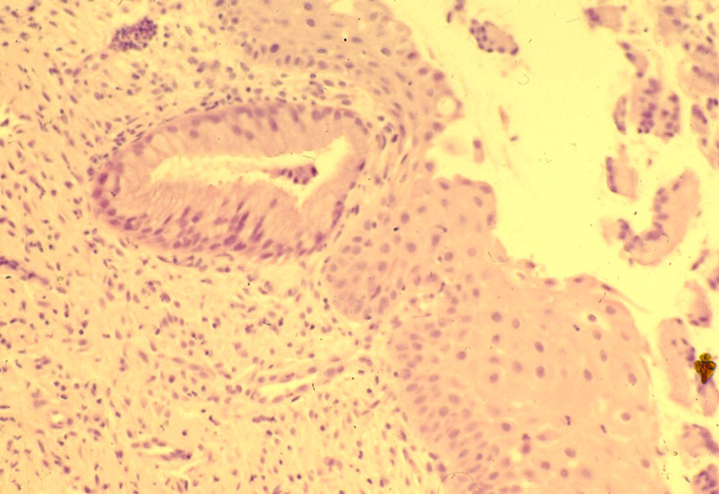
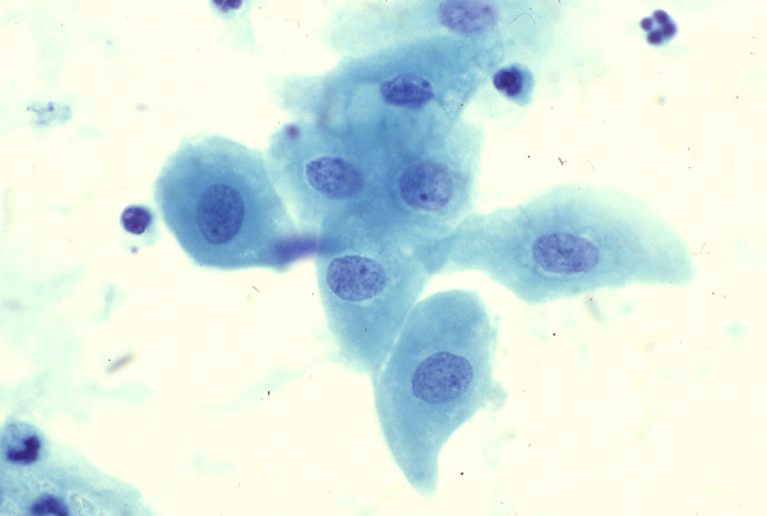
- From birth until puberty, the endocervical epithelium is composed of columnar cells and the ectocervical epithelium of native squamous cells. The interface between the two is termed the original squamocolumnar junction.
- During puberty and at the first pregnancy the cervix increases in volume in response to hormonal changes. The endocervical epithelium everts onto the ectocervix (portio vaginalis) exposing it to the acid pH of the vagina. This provides a stimulus for metaplastic change of the columnar epithelium.
- The process of metaplasia is a patchy one: it starts initially in the crypts and at the tips of the endocervical villae, which gradually fuse. Eventually the whole of the everted endocervical epithelium may be replaced by squamous epithelium.
Figure 2.6 Development of squamous metaplasia
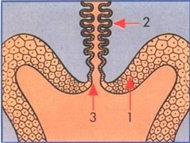

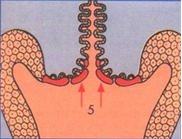
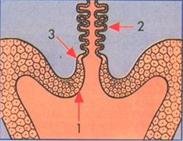
Key:
-
Native squamous epithelium
-
Columnar epithelium of endocervix
-
Squamocolumnar junction (SCJ)
-
Eversion of endocervical epithelium
-
Metaplastic change in transformation zone
Clinical significance of squamous metaplasia in the cervix
In the cervix, the area of the epithelium that has undergone metaplastic change is called the transformation zone (TZ). Numerous studies have shown that high-grade CIN primarily involves the immature metaplastic epithelial cells of the TZ where most, if not all cervical cancers arise.
Learning points from Chapter 2
|

